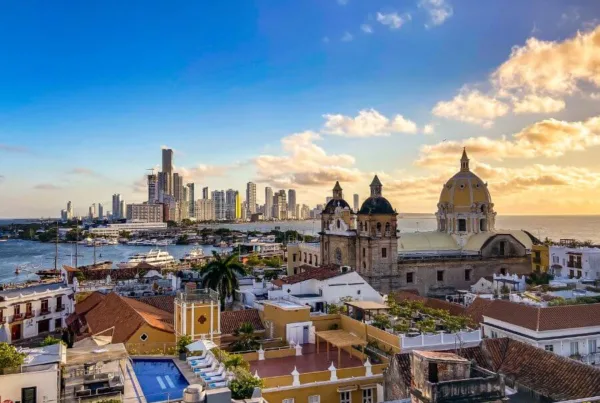Nestled among the towering peaks of the Himalayan mountains lies Bhutan, a hidden gem that remains untouched by the rush of modernity. Often heralded as the last Shangri-La, this Thunder Dragon Kingdom, with its capital city offering a blend of ancient tradition and contemporary charm, beckons travelers with the allure of a transformative experience.
Imagine a realm where monasteries, such as the iconic Tiger’s Nest, perch on cliff edges, and where the whisper of prayer flags rustling in the pure mountain air blends seamlessly with tales of Gross National Happiness prioritized over gross domestic product. A nation where sustainability isn’t a buzzword but a way of life, evident in policies like the sustainable development fee and efforts to control tourism through a low-volume tourism approach.

Embarking on a Bhutan tour isn’t merely about sightseeing. It’s about delving deep into a unique culture, understanding its values, and connecting with its warm-hearted people. This Bhutan travel guide aims to be more than just a roadmap to the country’s treasures; it’s your passport to a deeper understanding and appreciation of a place truly like no other.
Whether you enter Bhutan via Paro International Airport or seek insights about the Bhutan visa process and the role of trusted tour operators, each section of this guide offers valuable insights. Dive in, and let each word paint a vivid canvas of Bhutan’s allure, urging you not just to visit, but to immerse, connect, and be transformed.
Why Bhutan is Unique
Bhutan’s distinction is in its soulful fusion of culture, spirituality, and forward-thinking development.
Bhutanese Culture and Spirituality
 At the very heart of Bhutan is its profound spiritual essence. The country resonates with the rhythmic beats of ceremonial drums, harmonious chants, and vivid monastic festivals, painting a picture of a nation deeply in touch with its spiritual roots.
At the very heart of Bhutan is its profound spiritual essence. The country resonates with the rhythmic beats of ceremonial drums, harmonious chants, and vivid monastic festivals, painting a picture of a nation deeply in touch with its spiritual roots.
This deep connection extends beyond religious ceremonies. Iconic monastic retreats, like the Tiger’s Nest, beckon travelers from all corners, promising an experience of introspection and enlightenment. As you wander its streets, the traditional Bhutanese way of life is evident everywhere, from the intricately woven Gho and Kira outfits worn with pride to the age-old customs that shape daily life.
Embracing Gross National Happiness and Sustainable Development
In a world that often prioritizes economic prowess, Bhutan stands out with its unique benchmark: Gross National Happiness (GNH).
This isn’t just a measure but a reflection of the country’s commitment to the holistic well-being of its people, balancing material and spiritual growth. Embodying this vision, the nation’s developmental strategies prioritize sustainability.
Recognized globally, Bhutan’s progressive stance toward eco-centric development is evident in its endeavors to remain carbon-negative, blending ancient wisdom with modern responsibility.
Bhutan’s Legacy in Environmental Conservation
 Bhutan’s lush, mist-covered mountains are more than scenic backdrops; they are bastions of its historical, cultural, and ecological heritage. The nation boasts of over 70% forest cover, acting as a green sanctuary amidst global urbanization.
Bhutan’s lush, mist-covered mountains are more than scenic backdrops; they are bastions of its historical, cultural, and ecological heritage. The nation boasts of over 70% forest cover, acting as a green sanctuary amidst global urbanization.
This commitment to greenery safeguards its incredible biodiversity. From elusive snow leopards navigating high passes to a dazzling array of birds that grace its skies, Bhutan’s dedication to environmental conservation ensures that its natural wonders thrive for generations to come.
Navigating Your Journey: From International Airports to Overland Adventures
Every step of the journey to visit Bhutan unfolds like a storybook chapter, whether touching down at an international airport or embarking on an overland adventure.
Landing at Paro International Airport and Beyond
 Landing at Paro, Bhutan’s only international airport, is not just an act of travel, but a transcendental experience. The plane gracefully maneuvers between towering peaks, treating passengers to views of terraced fields, ancient dzongs, and pristine valleys.
Landing at Paro, Bhutan’s only international airport, is not just an act of travel, but a transcendental experience. The plane gracefully maneuvers between towering peaks, treating passengers to views of terraced fields, ancient dzongs, and pristine valleys.
After this visual treat, a short drive from Paro airport brings you to Thimphu, Bhutan’s bustling capital, where tradition and modernity intertwine seamlessly.
Bhutan Airlines and Other Flight Options
Flying into Bhutan is as unique as the country itself, thanks to the exclusivity of its skies. With a select few carriers, including Bhutan Airlines, entering Bhutan becomes an unforgettable segment of your journey.
Direct Flights and Popular Routes
For those seeking a direct flight to Bhutan, both Bhutan Airlines and Druk Air serve as primary connectors. They offer connecting flights from hubs like Kathmandu, New Delhi, Bangkok, and Singapore, making Bhutan more accessible.
Whether departing from Kathmandu or New Delhi or exploring connecting flight options, the aerial views are bound to captivate.
Navigating Airfare and Finding Deals
For those seeking a direct flight to Bhutan, both Bhutan Airlines and Druk Air serve as primary connectors. They offer flights from major hubs such as Kathmandu, New Delhi, Bangkok, and Singapore.
With direct routes from cities like Kathmandu or New Delhi, accessing the secluded kingdom has never been easier, and various connecting flight options further expand the possibilities for travelers.
The Overland Adventure: Beyond International Airport Boundaries
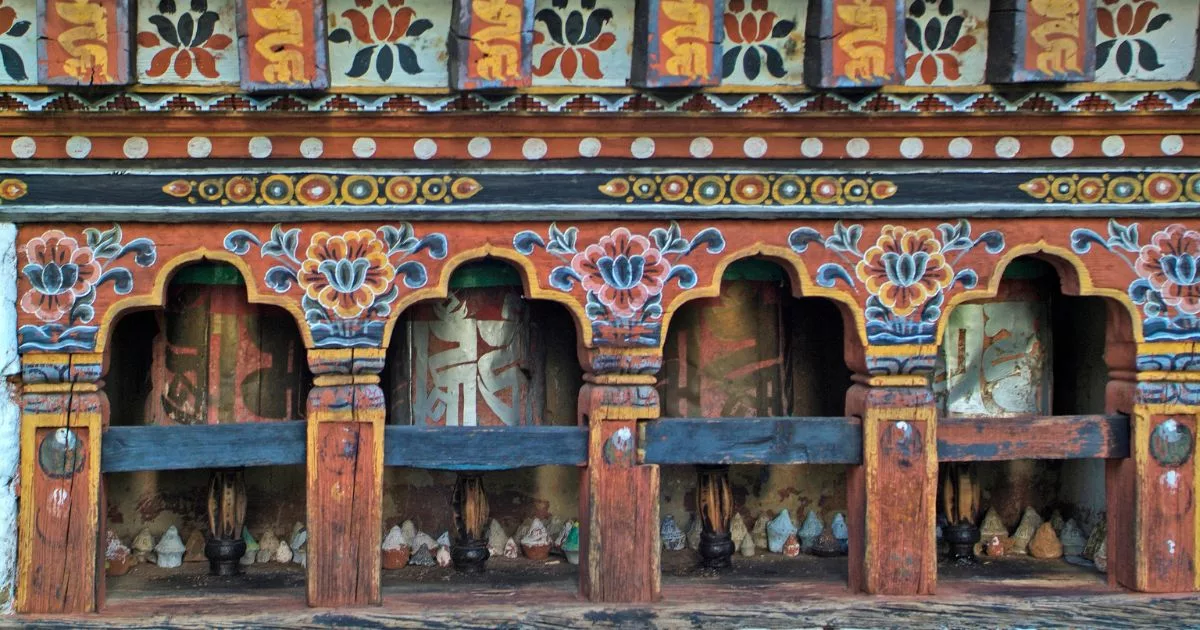 Choosing an overland route to reach Bhutan is like diving deep into a riveting tale. The main point of land entry is Phuentsholing, which sits adjacent to West Bengal in India. For many travelers, direct buses from Indian cities to Phuentsholing become the most convenient and scenic mode of entry.
Choosing an overland route to reach Bhutan is like diving deep into a riveting tale. The main point of land entry is Phuentsholing, which sits adjacent to West Bengal in India. For many travelers, direct buses from Indian cities to Phuentsholing become the most convenient and scenic mode of entry.
This town stands as a testament to Bhutan’s close ties with India. As you traverse along winding roads, Bhutan’s majestic beauty, history, and daily life unfold before your eyes. Every mile is a cherished memory waiting to be made. And while Paro airport remains the sole international airport for now, land entrances, like through Gelephu, offer alternative pathways, connecting Bhutan with other regions.
Key Preparations: Visa, Costs, and the Sustainable Development Fee
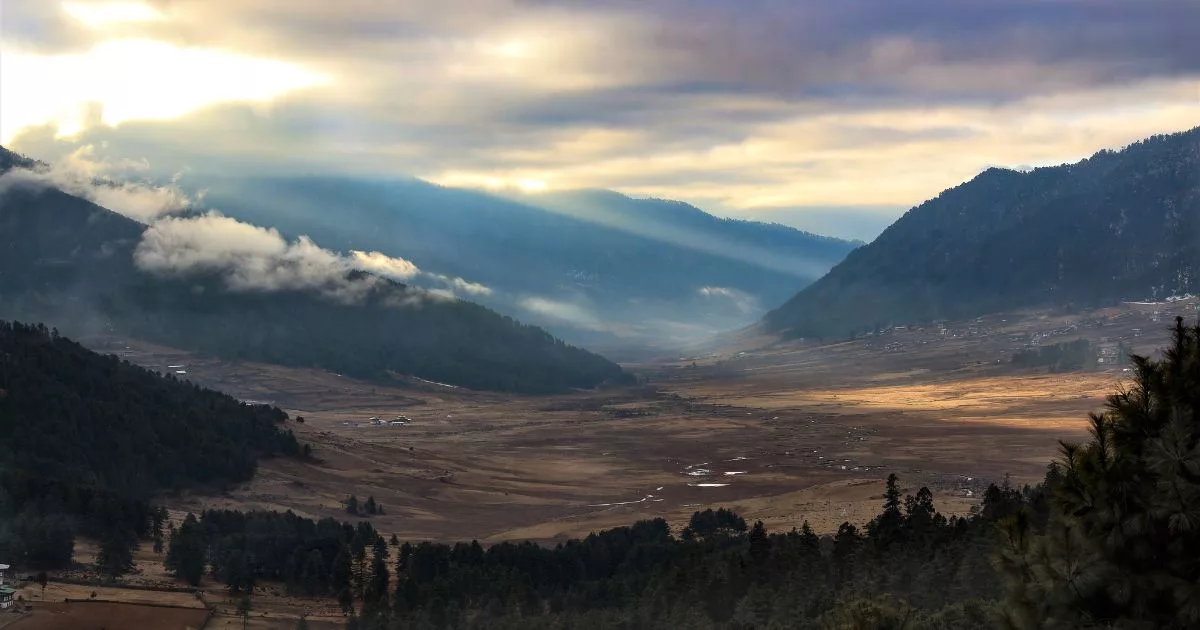 When planning to visit Bhutan, you should know that you will need to consider more than just the logistics of the trip.
When planning to visit Bhutan, you should know that you will need to consider more than just the logistics of the trip.
Visa and Entry: Step-by-Step Guide of Bhutan’s Visa Process
For many, Bhutan’s tourist visa procedure might seem complex at first glance. But when deconstructed step-by-step, it reveals a structured and systematic approach.
Step 1: Partner with a Recognized Bhutanese Tour Operator
Your journey begins by partnering with a licensed Bhutanese tour operator recognized by the Bhutanese government or their global counterparts. They play a crucial role in simplifying the tourist visa application and ensuring compliance with Bhutan’s exclusive tourism policies.
Step 2: Submitting the Necessary Details and Itinerary
Upon alignment with an operator, you’ll submit vital details, particularly for passport holders. This includes passport information, intended travel dates, and a preliminary itinerary. These elements shape your visa application.
Step 3: Confirm Payment for the ‘Minimum Daily Package’
Moving forward with the visa process requires validating your payment for the ‘Minimum Daily Package’. This initiative by the Bhutanese government promotes sustainable tourism by including myriad travel essentials in one comprehensive fee.
Step 4: Receive Your Visa Clearance Letter
Following successful application and payment, a visa clearance letter is issued. This key document is pivotal when entering Bhutan, especially at Paro International Airport. It’s wise to possess both electronic and paper versions.
Step 5: Final Visa Stamping at Entry Point
Upon arrival, present your visa clearance letter at the immigration office, then settle the visa cost. Subsequently, your passport will receive the Bhutan tourist visa stamp, signaling the beginning of your adventure.
The Essence Behind Bhutan’s Unique Visa Process
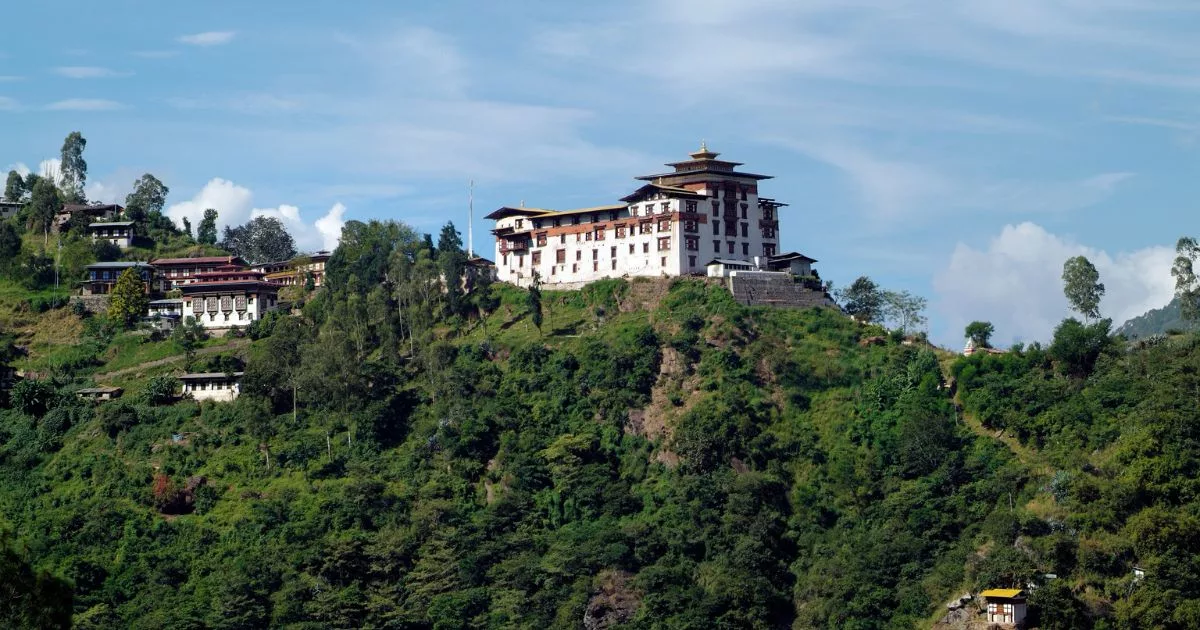 Bhutan’s visa process resonates with its guiding philosophy of harmonizing material and spiritual growth. Unlike countries where the focus leans heavily on tourist numbers, Bhutan values the quality of its visitors.
Bhutan’s visa process resonates with its guiding philosophy of harmonizing material and spiritual growth. Unlike countries where the focus leans heavily on tourist numbers, Bhutan values the quality of its visitors.
This meticulous visa approach safeguards Bhutan’s pristine blend of nature, culture, and tradition. The Tourism Council ensures that this visa framework serves as a filter, admitting only those genuinely eager to value Bhutan’s ethos, promoting respectful and conscious tourism.
Understanding the ‘Minimum Daily Package’ and Daily Sustainable Development Fee
The ‘Minimum Daily Package’ is Bhutan’s sustainable tourism manifesto. It’s not merely a fee; it’s a holistic service package encompassing accommodations, meals, expert guides, and more.
Integral to this is the Sustainable Development Fee (SDF). Beyond being an entry fee, the SDF represents every traveler’s pledge to support Bhutan’s holistic growth. Revenues from the SDF fortify sectors like health, education, and heritage conservation, ensuring each visitor’s journey has a lasting, positive imprint.
Money Matters: The Bhutanese Ngultrum and Its Similarity to Indian Rupees
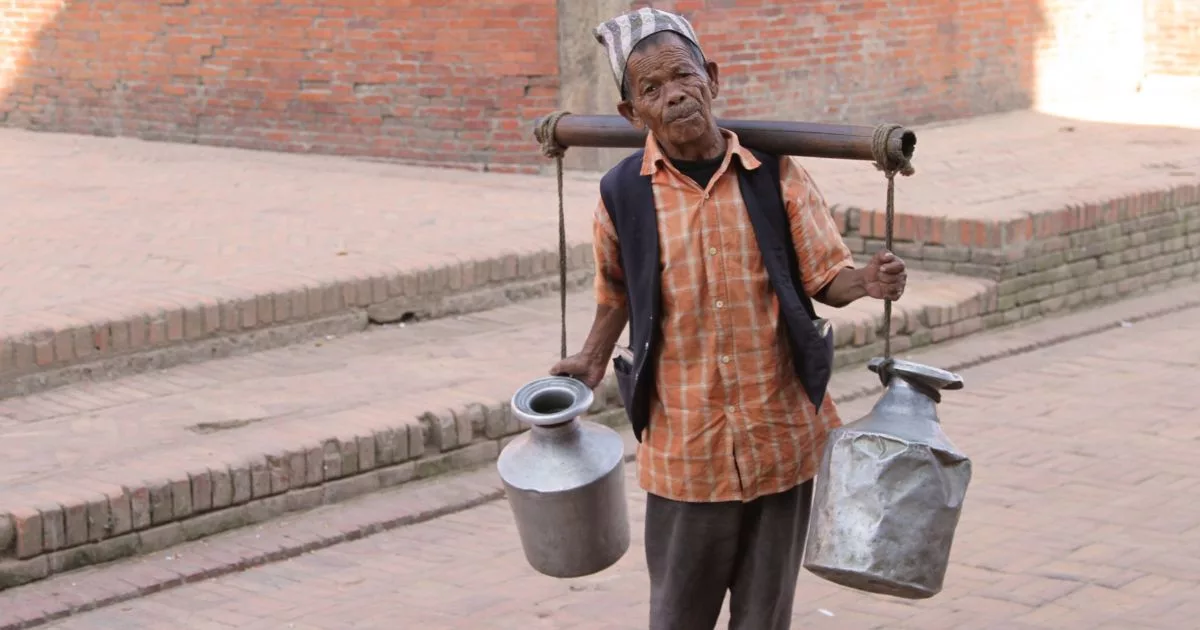 Navigating Bhutan, you’ll interact with its economy, symbolized by the Bhutanese Ngultrum (BTN). The BTN, aligned with the Indian Rupee (INR), reflects Bhutan’s affinity with India. Interestingly, Indian citizens can enter Bhutan using a Voter’s Identity Card in lieu of a passport.
Navigating Bhutan, you’ll interact with its economy, symbolized by the Bhutanese Ngultrum (BTN). The BTN, aligned with the Indian Rupee (INR), reflects Bhutan’s affinity with India. Interestingly, Indian citizens can enter Bhutan using a Voter’s Identity Card in lieu of a passport.
While urban centers in Bhutan offer modern banking, in serene villages, it’s advisable to carry cash – both Ngultrum and foreign currency. This not only ensures financial readiness but also offers an intimate glimpse into Bhutan’s vibrant economic tapestry.
Best Time to Embark on the Bhutanese Journey
Bhutan, with its varied topography and climate zones, offers distinct experiences throughout the year. Rather than just dictating the best times, let’s appreciate each season’s uniqueness, enabling travelers to align their preferences with what Bhutan unfurls during different times of the year.
Deciphering Bhutan’s Climate: A Month-by-Month Insight
The Serenity of Spring (March to May)
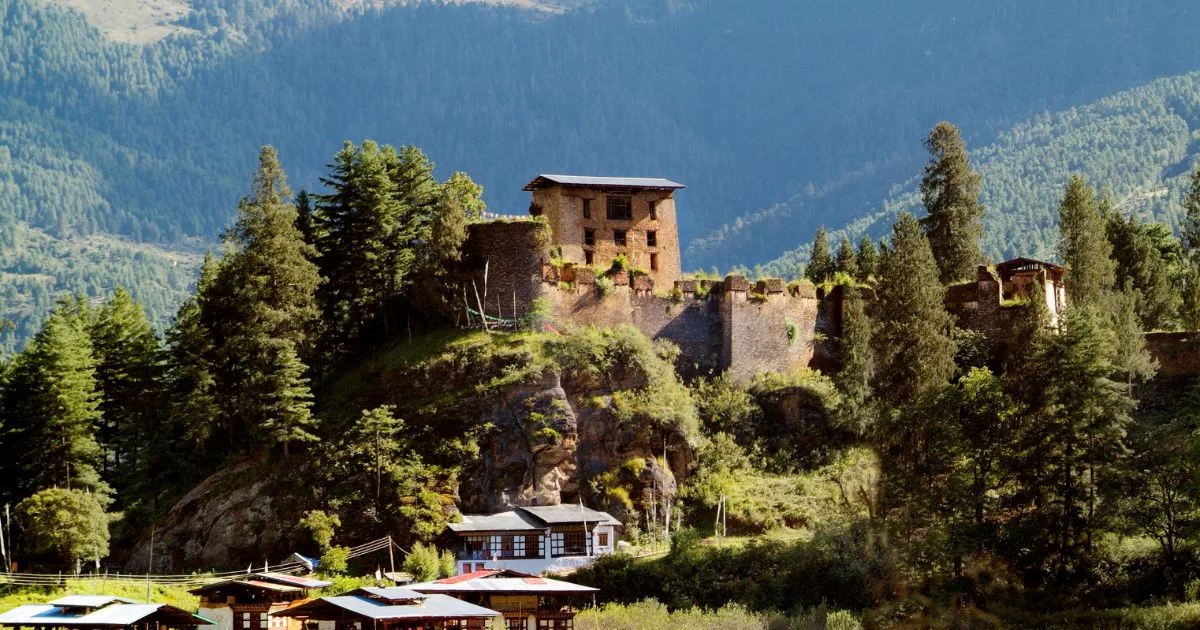 Spring in Bhutan is a nature lover’s paradise. As the valleys awaken with blossoms of rhododendrons, magnolias, and wildflowers, the air is imbued with a sweet fragrance. The skies are crystal clear, presenting jaw-dropping vistas of the majestic Himalayas.
Spring in Bhutan is a nature lover’s paradise. As the valleys awaken with blossoms of rhododendrons, magnolias, and wildflowers, the air is imbued with a sweet fragrance. The skies are crystal clear, presenting jaw-dropping vistas of the majestic Himalayas.
It’s during this period that the Paro Tshechu, one of Bhutan’s grandest festivals, paints the town with vibrant colors and traditional dances. Opt for spring if you wish to witness Bhutan in its full natural and cultural bloom.
The Lushness of Summer (June to August)
While many might deter you from visiting Bhutan during the monsoons, the rain-drenched landscapes have their own allure. The paddy fields transform into a brilliant shade of green, and the misty mountains play hide and seek with the clouds.
Yes, there might be occasional downpours, but they only add to the region’s mystique. Summer also sees fewer tourists, offering a more intimate experience of Bhutan’s splendors.
The Golden Hues of Autumn (September to November)
Autumn in Bhutan is nothing short of magical. The forests drape themselves in golden and crimson hues, creating landscapes that seem straight out of a painting. This is the season that offers the most lucid views of the snow-capped Himalayan peaks.
The much-celebrated Thimphu Tshechu, with its mask dances and vibrant processions, takes place during this period, providing travelers with an immersive cultural experience against an enchanting backdrop.
The Crispness of Winter (December to February)
For those who wish to experience the tranquility of Bhutan amplified, winter is the time. The drop in temperature might be a deterrent for some, but the silver lining is the serenity that envelops the nation.
Snowfall graces the higher regions, turning them into winter wonderlands. The valleys, on the other hand, bask in pleasant daytime temperatures. Also, the Punakha Winter Tshechu during this season offers a beautiful blend of spirituality and celebration.
Syncing with Bhutan’s Festive Calendar
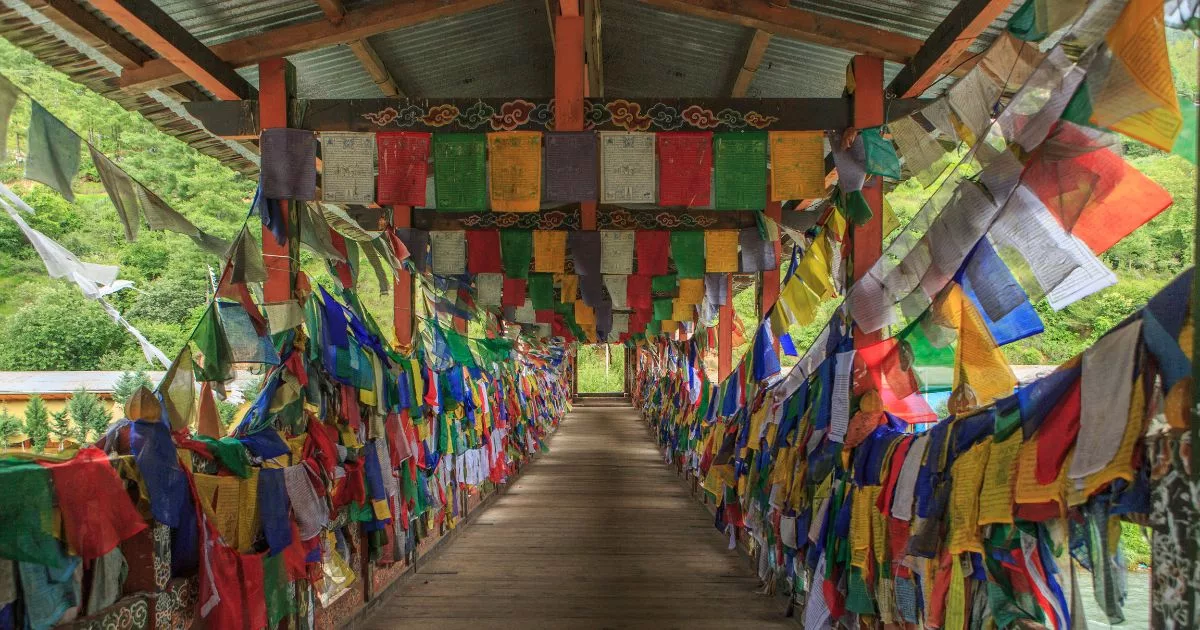 In the heart of the Himalayas, Bhutan’s festivals burst with spiritual significance and vibrant displays.
In the heart of the Himalayas, Bhutan’s festivals burst with spiritual significance and vibrant displays.
- Thimphu Tshechu (Thimphu): Celebrated in September/October, this grand festival in the capital city attracts thousands. Masked dancers recount tales of ancient battles, and Buddhist legends, and pay homage to deities. It’s not just a visual treat but an insight into the spiritual fervor of Bhutan.
- Paro Tshechu (Paro): Held in March/April, this religious festival is most famous for the grand display of the Guru Thongdrel, a sacred scroll, early in the morning. Believers gather to seek blessings and witness the splendid mask dances.
- Jambay Lhakhang Drup (Bumthang): Hosted in October, it’s renowned for the ‘Fire Dance’ where participants leap over flames to cleanse sins. This festival commemorates the establishment of this 7th-century temple.
Dive into Bhutan’s Must-Visit Attractions
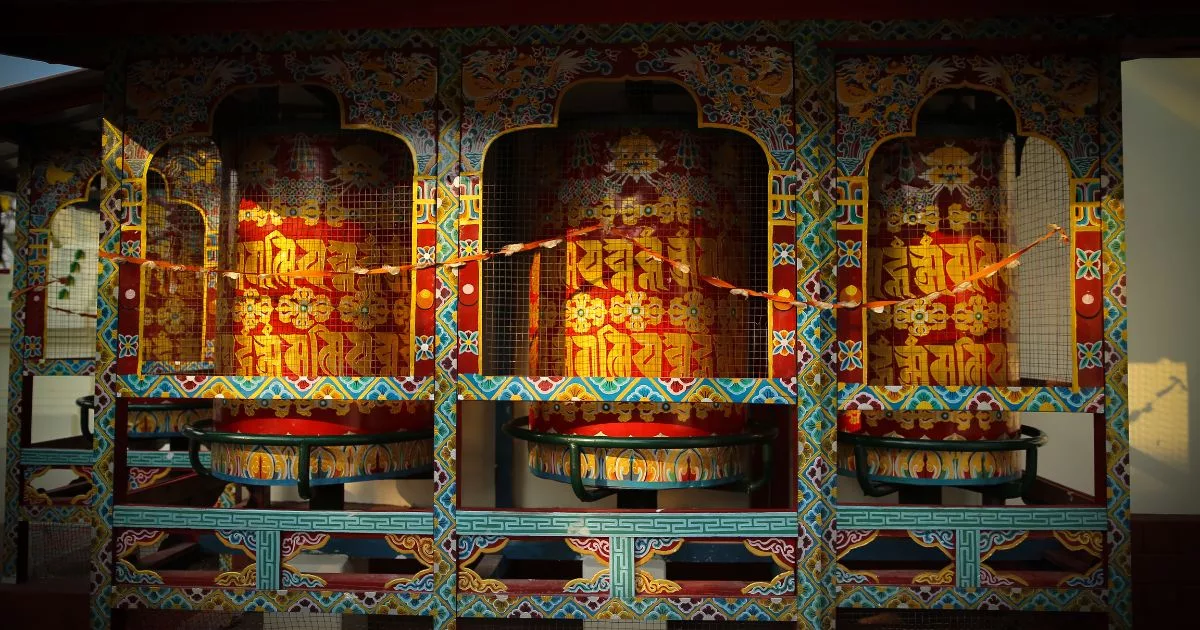 Bhutan, often referred to as the last Shangri-la, beckons visitors with its blend of culture, nature, and legend. To visit Bhutan is to open the door to stories of legends, rich spirituality, and breathtaking landscapes.
Bhutan, often referred to as the last Shangri-la, beckons visitors with its blend of culture, nature, and legend. To visit Bhutan is to open the door to stories of legends, rich spirituality, and breathtaking landscapes.
Immersing in Cultural Landmarks
A Bhutan tour is incomplete without experiencing its iconic architectural marvels:
- Tiger’s Nest Monastery (Paro): Located high on a cliff, this place isn’t just a sightseeing spot—it’s a spiritual journey. Legend narrates how Guru Rinpoche traveled here on a tigress, planting the seeds of Buddhism in Bhutan.
- Punakha Dzong (Punakha): Standing gracefully at the meeting point of two rivers, this fortress serves as the winter residence for the monastic body and witnesses the grandeur of the Punakha Tshechu every year.
- Tashichho Dzong (Thimphu): Beyond its role as the epicenter of governance, this serene space exemplifies the fusion of spirituality with administrative duties.
These landmarks, steeped in history, remain vibrant centers of worship, governance, and Bhutanese culture.
Nature’s Palette: From Mountains to Parks
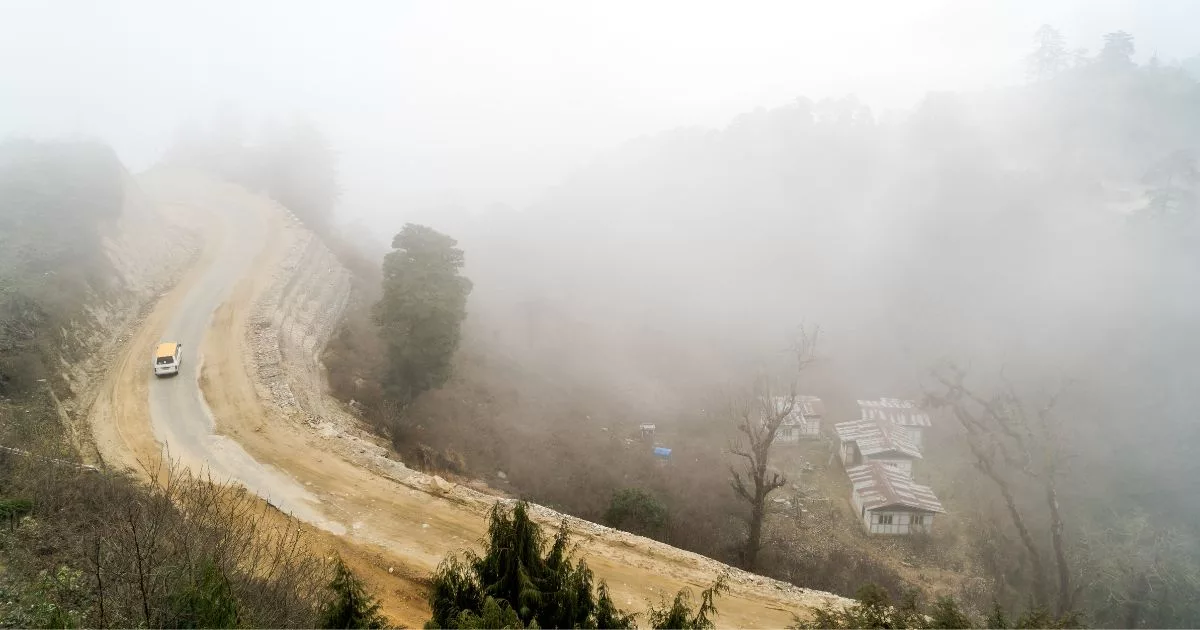 Central Bhutan offers nature in its purest form, with national parks providing refuge to enigmatic species like snow leopards and red pandas. Jigme Dorji National Park, the most expansive of them, is a haven for glaciers, diverse wildlife, and rare flora.
Central Bhutan offers nature in its purest form, with national parks providing refuge to enigmatic species like snow leopards and red pandas. Jigme Dorji National Park, the most expansive of them, is a haven for glaciers, diverse wildlife, and rare flora.
Whether marveling at rhododendron carpets in Phobjikha Valley or standing awestruck by the Himalayan giants, nature’s splendor in Bhutan never ceases to enthrall.
Experiencing Local Markets and Community Hubs
A stroll through Bhutan’s markets is an immersion in colors, sounds, and aromas. At Thimphu’s Centenary Farmers Market, urban vibes blend with rustic charm as farmers showcase their organic bounty.
Here, you can explore unique handicrafts, savor the spice of Bhutanese chilies, or engage in heartfelt interactions with locals. Each market experience is a chapter of its own in your Bhutan travel story.
Crafting Your Bhutan Adventure with Expert Travel Agents
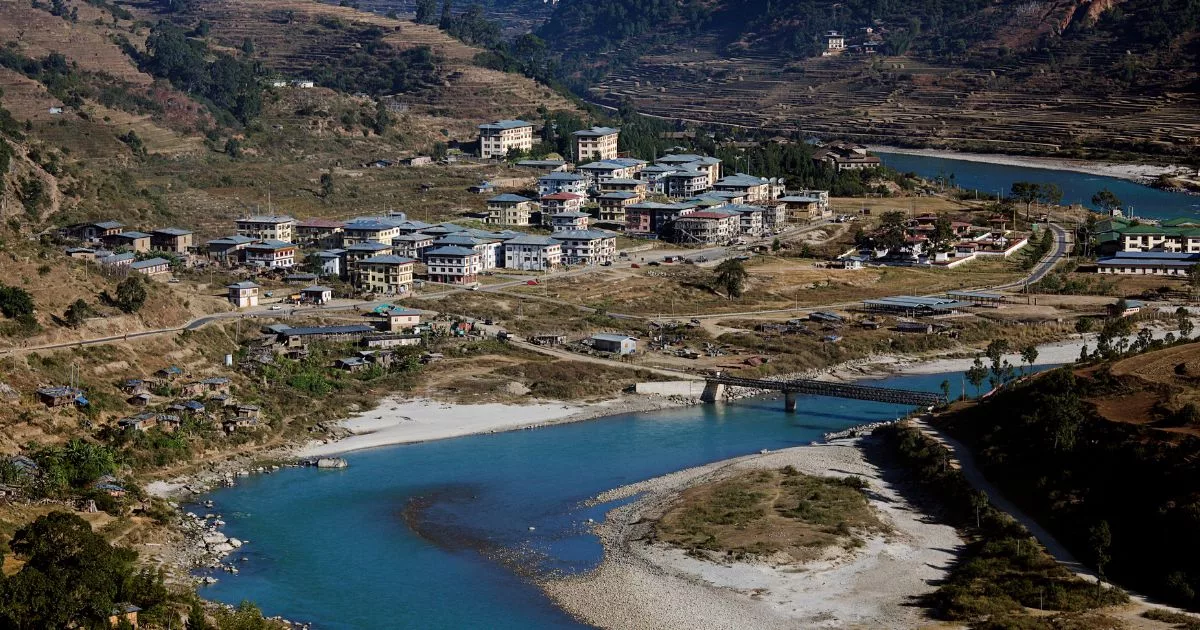 While many adventurers yearn to travel independently, navigating Bhutan’s splendors is best undertaken with the guidance of local expertise. Partnering with a reputable tour company ensures a comprehensive Bhutan tour, tailored to your preferences. From logistics to sharing hidden gems, experienced tour guides make your journey memorable.
While many adventurers yearn to travel independently, navigating Bhutan’s splendors is best undertaken with the guidance of local expertise. Partnering with a reputable tour company ensures a comprehensive Bhutan tour, tailored to your preferences. From logistics to sharing hidden gems, experienced tour guides make your journey memorable.
In addition, a travel agent familiar with Bhutan’s intricacies can provide unique insights, ensuring that you don’t miss out on any facet of this Himalayan paradise. So, as you plan your visit to Bhutan, consider collaborating with travel agents who specialize in crafting unparalleled Bhutan tours.
Respecting Bhutan’s Heartbeat: From Etiquette to Hospitality
Bhutan is more than a destination; it’s a deeply spiritual and cultural experience. Embracing its essence requires understanding and adhering to its values.
Navigating Cultural Norms and Local Etiquette
In Bhutan, traditions are deeply respected. When visiting monasteries, it’s customary to circle them clockwise. On treks, spinning prayer wheels and hoisting prayer flags benefit all sentient beings. Sharing a meal? Always receive food with both hands as a sign of respect.
Embracing Genuine Bhutanese Hospitality
Stepping into a Bhutanese home means being treated as family. You might be offered ‘ara’, a local spirit, or ’ema datshi’, a chili cheese delicacy. The warmth isn’t just in the food but in the stories shared and memories made.
Packing Essentials for Bhutan: From Seasonal Gear to Tech Needs
 Bhutan’s diverse climate and topographical variations require thoughtful packing. Equipping yourself rightly enhances the travel experience.
Bhutan’s diverse climate and topographical variations require thoughtful packing. Equipping yourself rightly enhances the travel experience.
Seasonal Recommendations: Dressing for Bhutan’s Climate
Bhutan’s varied altitudes demand suitable attire:
- Summer: Lightweight clothing, but carry a raincoat. Thimphu’s showers or Punakha’s warmth, summer is a blend.
- Winter: Think layers. As you ascend towards Dochula Pass, the air gets colder. Don woolens, especially for Bumthang’s snow.
- Monsoon season: Bhutan turns a deeper shade of green. Umbrellas and waterproof boots are essentials.
Regardless of the season, modesty is key. Bhutan’s sanctity is preserved in its dress code too.
Tech and Gadgets: Staying Connected and Powered
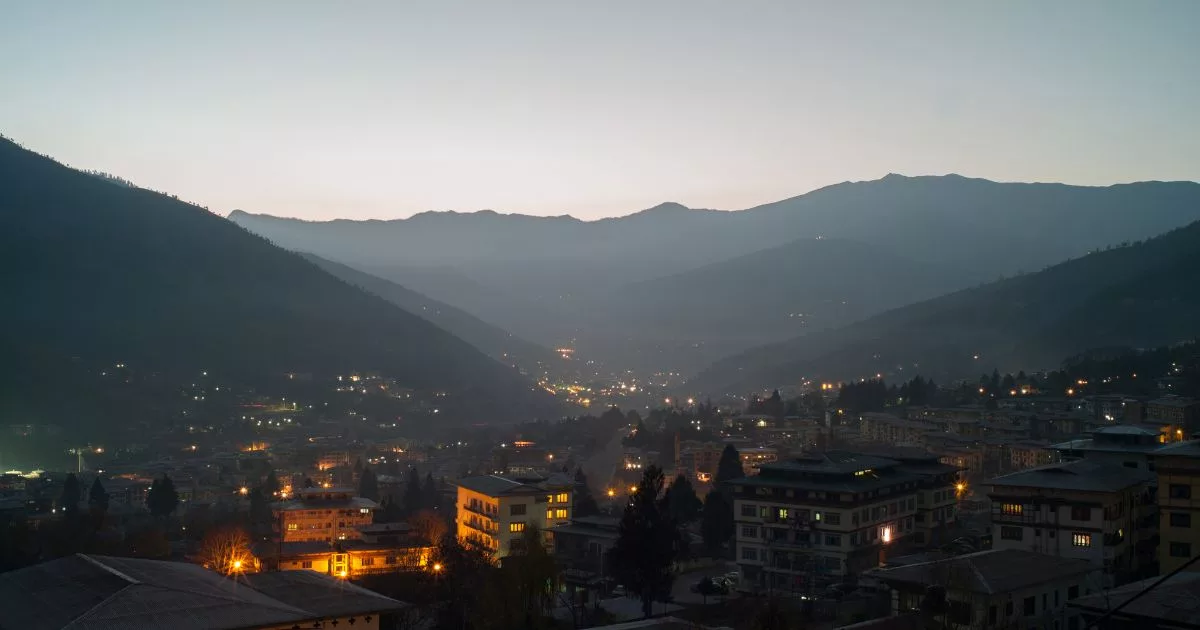 Journeying through Bhutan doesn’t mean disconnecting from the world:
Journeying through Bhutan doesn’t mean disconnecting from the world:
- Power Adapters: Bhutan’s electricity runs at 230V. Check your devices and get an adapter if necessary.
- Portable Wi-Fi: Not all parts of Bhutan have strong mobile connectivity. A portable Wi-Fi might be a lifesaver.
- Solar-Powered Charger: Treks might leave you away from power sources. Harness the Himalayan sun instead.
- Camera & Extra Memory Cards: Bhutan’s vistas are enchanting. Capture them in high-res.
While tech aids connectivity, remember to sometimes unplug and immerse fully in Bhutan’s serenity.
Resolving Queries: Prioritizing Safety and Health in Bhutan
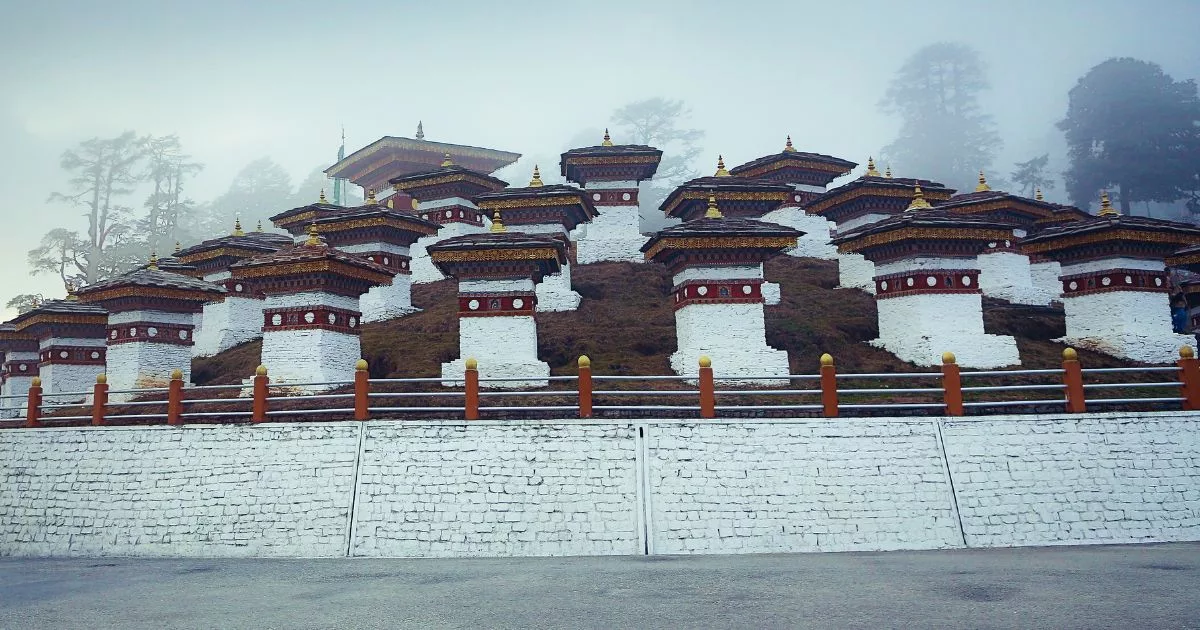 Bhutan’s approach to tourism prioritizes the well-being of its visitors. Stay informed, stay prepared, and embrace the Bhutanese experience with ease.
Bhutan’s approach to tourism prioritizes the well-being of its visitors. Stay informed, stay prepared, and embrace the Bhutanese experience with ease.
Ensuring a Safe and Smooth Journey
While Bhutan is largely a safe haven for travelers, ensuring a seamless journey requires a blend of preparation and mindfulness. It’s crucial to be wary of local wildlife, especially during treks; the Himalayan bear or wild mountain dogs might be fascinating but they demand respect and distance.
Local guides aren’t just storytellers of Bhutan’s myths but also guardians of your safety, ensuring that you navigate difficult terrains without mishaps. Similarly, Bhutan’s winding mountain roads can be exhilarating yet require caution.
If self-driving, it’s pivotal to get familiar with local driving norms. But beyond these logistics, respecting local customs and traditions is perhaps the most integral aspect of safety. Bhutan’s warmth is unparalleled, but it’s a relationship of mutual respect.
Health Tips for Bhutan: Vaccinations, Altitude, and More
 A journey to Bhutan is also a journey of altitude shifts, which can pose health challenges. Altitude sickness is a real concern, especially if you’re ascending quickly. It’s vital to acclimatize, ascend slowly, and stay hydrated. Symptoms can range from headaches to nausea, so always listen to your body.
A journey to Bhutan is also a journey of altitude shifts, which can pose health challenges. Altitude sickness is a real concern, especially if you’re ascending quickly. It’s vital to acclimatize, ascend slowly, and stay hydrated. Symptoms can range from headaches to nausea, so always listen to your body.
Before setting off, consult with a travel clinic about recommended vaccinations for Bhutan. While the country is relatively clean and disease-free, Hepatitis A, Typhoid, and Tetanus are commonly recommended vaccines. It’s also a good practice to have comprehensive travel insurance that covers medical evacuation, considering Bhutan’s remote terrains.
Lastly, Bhutan’s culinary landscape is spicy and distinct. While a delight for the taste buds, it’s advisable to gradually ease into the local diet to avoid digestive upsets. Remember, local herbs and teas not only offer unique flavors but often have medicinal properties to counter minor ailments.
Conclusion: Embracing the Magic of Bhutan and Planning Your Journey
 Bhutan, often referred to as the “Thunder Dragon” kingdom, is a haven of spirituality, cultural vibrancy, and untouched natural beauty. While many envision the majestic Himalayan mountains or the iconic Tiger’s Nest when thinking of Bhutan, there’s so much more that awaits discovery.
Bhutan, often referred to as the “Thunder Dragon” kingdom, is a haven of spirituality, cultural vibrancy, and untouched natural beauty. While many envision the majestic Himalayan mountains or the iconic Tiger’s Nest when thinking of Bhutan, there’s so much more that awaits discovery.
As you’re planning your journey, ensure you’re aware of key elements like the sustainable development fee, a commendable initiative by Bhutan to control tourism and promote sustainability. This fee also underpins Bhutan’s unique approach to low-volume tourism.
Booking your trip with an accredited tour operator or travel agent can help streamline your Bhutan visa application process, and they can guide you through the proposed itinerary. Speaking of entering this serene kingdom, Paro International Airport stands as the primary gateway for international tourists. Both Druk Air and Bhutan Airlines are the key carriers that connect Bhutan with major cities like New Delhi.
The Tourism Council offers guidance on the intricacies of visiting Bhutan, and using their resources can significantly enhance your trip. As with all international travel, a valid passport and adequate travel insurance are paramount. Additionally, don’t forget to budget for the minimum daily package, a transparent fee that includes your accommodation, meals, entrance fees, and the services of a tour guide.
 Diving deep into Bhutan’s ethos, one can’t ignore the country’s philosophy of Gross National Happiness, a testament to its emphasis on holistic well-being over mere gross domestic product. As you plan your visit, it’s essential to remember that Bhutan isn’t just another travel destination; it’s an experience, a lesson in sustainability, and a journey of self-discovery.
Diving deep into Bhutan’s ethos, one can’t ignore the country’s philosophy of Gross National Happiness, a testament to its emphasis on holistic well-being over mere gross domestic product. As you plan your visit, it’s essential to remember that Bhutan isn’t just another travel destination; it’s an experience, a lesson in sustainability, and a journey of self-discovery.
So, whether you’re looking forward to immersing yourself in Bhutan’s cultural programs, hiking across its national parks, or simply exploring the capital city and its markets, remember to travel with respect and openness. Bhutan’s heart beats with authenticity, spirituality, and a deep-rooted connection to nature, waiting for explorers to sync their rhythms with it.
It’s safe to say that a Bhutan travel experience is one you will never forget!









